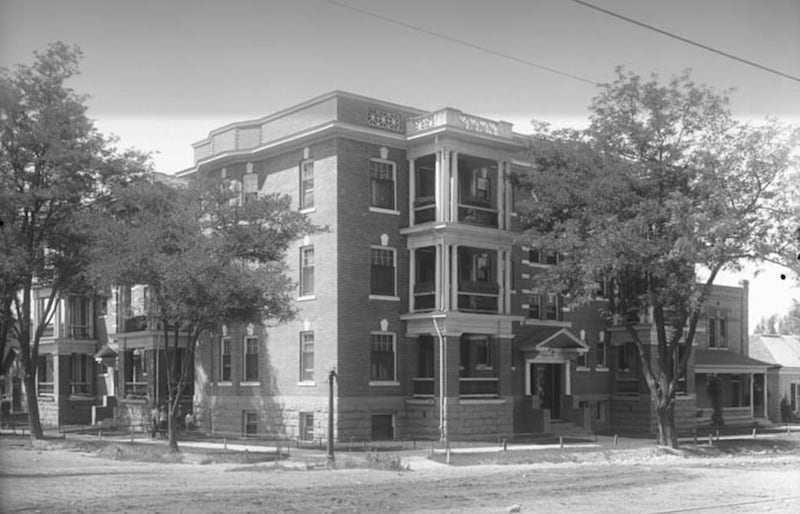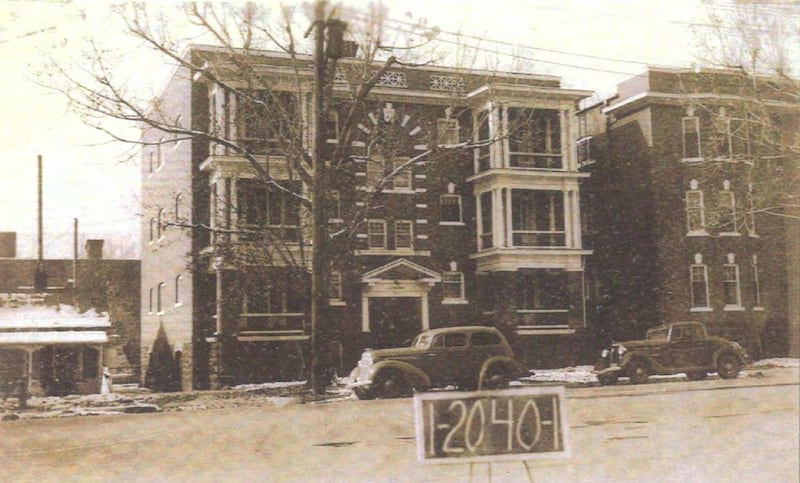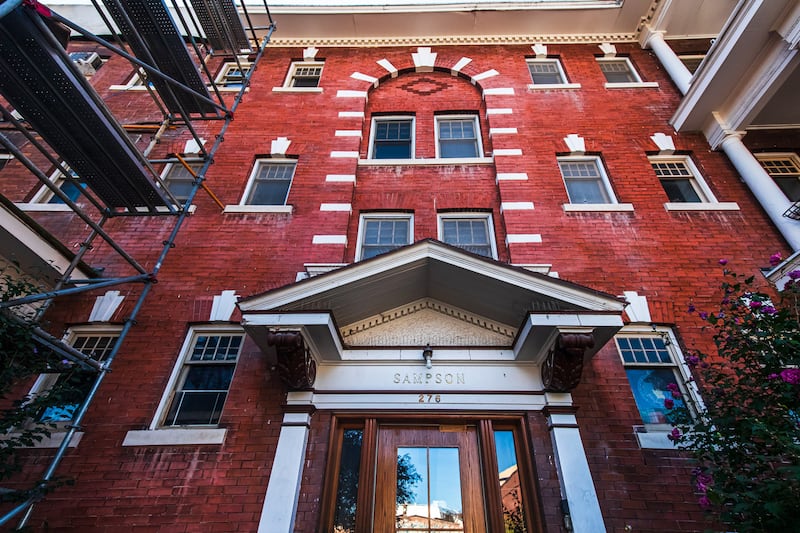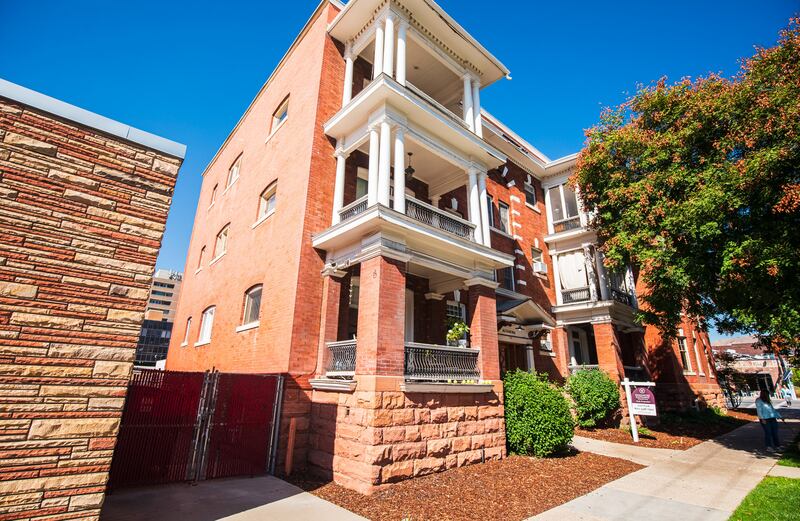Annie Isaacson wasn’t sure what to expect when Salt Lake City officials told her she’d need all 17 homeowners in the Sampson and Altadena condominiums to agree to get the century-old buildings added to the city’s list of historic landmarks.
As she met with her neighbors, however, she found that everyone in the diverse community within the buildings was united in the effort to protect them.
“That is the one thing — for whatever people’s beliefs, politics, religion, behaviors — they all agreed that they wanted this building on the local historic registry. That was a gift for us to find that out,” said Isaacson, president of the building’s homeowners association, as she spoke with members of the Salt Lake City Council last month.
Those efforts paid off Tuesday night, as members of the City Council voted unanimously to name both 119-year-old buildings historic landmarks. The designation offers new protections for the buildings that don’t exist with the National Register of Historic Places, to which both buildings were added in 2010.
It takes place as pressure from downtown development creeps closer to the Central City neighborhood, where both buildings are located.
A remaining piece of city history
Both buildings were constructed in 1906 on the southwest corner of 300 South and 300 East, commissioned by Octavius and Eunice Sampson, according to a report on the building’s history filed when it was up for consideration for the National Register.
The Sampsons, historians noted, were members of the nearby First Church of Christ, Scientist, and it’s believed that the building served as a residence for other members of the congregation. It cost approximately $25,000 — likely close to $1 million in today’s dollars, depending on the inflation calculation — to construct.

Both buildings are important because they were constructed during Salt Lake City’s first large wave of growth at the turn of the 20th century, according to Noah Elmore, a principal planner in Salt Lake City. That’s when single-family homes began to be replaced with the city’s first apartment buildings, as it became more dense for the first time.
“(They) are early examples of apartment construction at the time, which saw the typical apartment block configured as a three-story walkup with two units on each floor, flanking a central staircase,” he said. “The buildings represent high-style examples of neoclassical architecture and apartment block construction.”

It remained in the Sampson family until the property was sold in 1945. While the city has changed dramatically since then, Elmore points out the buildings have remained in place as rare reminders of the era in city history.
Saving the buildings
The faces inside the building have also changed. The buildings’ first occupants were part of the city’s cultural and religious diversity, and Isaacson says the diversity has only expanded with time. Isaacson says the 17 units are filled with people of different ages, cultures, ethnicities and religions, but they’re all “living together in the same household,” and they all have the same goal.
“We want to be a lasting legacy for this city,” she said.
Lauren Funtanilla says she became a first-time homeowner when she purchased her unit last year. A native of Roy, she had traveled all over the world before she returned to Utah to be closer to family, explaining that she was relieved to come across the Altadena building on her search.
“It felt like I found a place to call home in this next chapter of my life,” she said Tuesday as she described the charm she found in touring the inside of the building, adding that it’s extra special given the sacrifices she said her grandparents and parents made to put her on track to be a homeowner one day.
Others were moved to tears as they expressed their love for the complex, as its future has suddenly been put into question with the city’s latest growth chapter. A brand new high-rise opened less than two blocks away last year, and many other projects have either started or been proposed in recent years, including a potential 185-foot hotel next door to the Sampson building.
Isaacson and other Sampson-Altadena residents began pushing for preservation as the city began discussions to rezone the area to allow for taller buildings as part of a zoning consolidation plan that’s since been approved.
While a National Register of Historic Places listing opens the door to state and federal tax incentives, it doesn’t offer the same layer of preservation as a local landmark status.

“We feel that our buildings are truly worth preserving amid the reshaping (of) our downtown,” said Dorothy Hamory, another resident of the historic buildings.
That’s not the only challenge. Residents have gathered almost $1 million over the last five years to restore bricks and other elements needed to preserve the building’s legacy, which hasn’t been easy because they’re not rich, Isaacson said.
New landmarks
Tuesday’s decision wasn’t all too surprising since the City Council had already signaled positive support. It also had the backing of city planners and the city’s historic landmark and planning commissions — and it met all the requirements the city looks for in a landmark, Elmore said.
The ruling, he added, would have “minimal impact” on surrounding properties, although it’s unclear what it might mean for the potential neighboring project. The city recently passed an ordinance that provides local landmark sites some protection against “overly tall” construction directly next to the property, Salt Lake City Councilman Darin Mano said.
However, he was happy to vote in favor of the measure. He called it a “win” for the city in September, asserting that there aren’t enough historic buildings being preserved.
“I’m excited that we’re here,” he reiterated before Tuesday’s vote.

